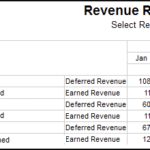- +39 3406487807
- studioartem@studioartem.it

If the expense supports the company’s overall operations but is not directly tied to the production process, it is an SG&A cost. SG&A expenses can vary significantly from company to company, depending on the business’s https://kelleysbookkeeping.com/what-is-a-general-ledger-account/ size, industry, and nature. It can make it challenging to compare SG&A expenses between companies, and it’s important to consider other factors, such as revenue and operating income when comparing.
SG bespoke jeweler wins East Ventures backing.
Posted: Thu, 25 May 2023 03:35:00 GMT [source]
There are also a few specific accounts that may warrant specific accounting treatment that exclude them from SG&A. For example, research and development costs are often not to be included in SG&A. In addition, depreciation costs are often reported in this section of the income statement but excluded from SG&A as well. Companies may aggregate all of these expenses in a single SG&A line, or it may segregate selling costs from general and administrative costs. SG&A expenses are an important benchmark as to the company’s break-even point. Regardless of sales, a business needs to cover this mostly fixed overhead cost before it can begin to turn a profit, so understanding SG&A is important for management to understand.
General expenses are incurred by a company regardless of the industry or products/services it creates. When it comes to business selling expenses, they’re often divided into direct and indirect costs. While reducing SG&A costs can provide a quick boost to profits, it’s important to avoid making cuts that could have a negative impact on long-term profitability. For example, reducing marketing and advertising costs might provide a short-term profit boost, but it could also harm sales in the long term. A business has many expenses that are not directly related to making or selling a product. Departments like human resources and information technology support the business but do not take a direct role in product creation.
For instance, research and development (R&D) costs are considered SG&A expenses in most industries. Still, in certain industries, such as pharmaceuticals, these costs might be treated as product costs due to their direct relationship with Sg&a Expense Selling developing new products. To manage SG&A expenses effectively, businesses need to track and analyze their costs carefully. The sales-related costs included in SG&A expenses can vary widely, depending on the nature of the business.
This line item includes nearly all business costs not directly attributable to making a product or performing a service. SG&A includes the costs of managing the company and the expenses of delivering its products or services. Administrative expenses are essential for companies and investors, as they can impact a company’s profitability and efficiency.

These expenses are necessary for the company’s sales and administrative functions and support its operations, regardless of whether it generates sales. Net/total revenue is always found at the top of the income statement, then COGS is deducted to get the gross margin or gross profit. Then there comes the section of operating expenses with SG&A, R&D and any other expenses that are listed below the gross margin. Operating/net profit is the result of deduction of these expenses from the gross margin/profit. Some expenses, such as interest expense or tax expense, are reported below operating income.
It includes expenses such as rent, advertising, marketing, accounting, litigation, travel, meals, management salaries, bonuses, and more. On occasion, it may also include depreciation expense, depending on what it’s related to. Administrative expenses are a subset of Selling, General, and Administrative (SG&A) expenses. They refer to the costs incurred by a company in its daily operations, not directly tied to producing goods or services or the sales process. Selling expenses are a subset of Selling, General, and Administrative (SG&A) expenses and refer to the costs incurred by a company in selling its products or services.